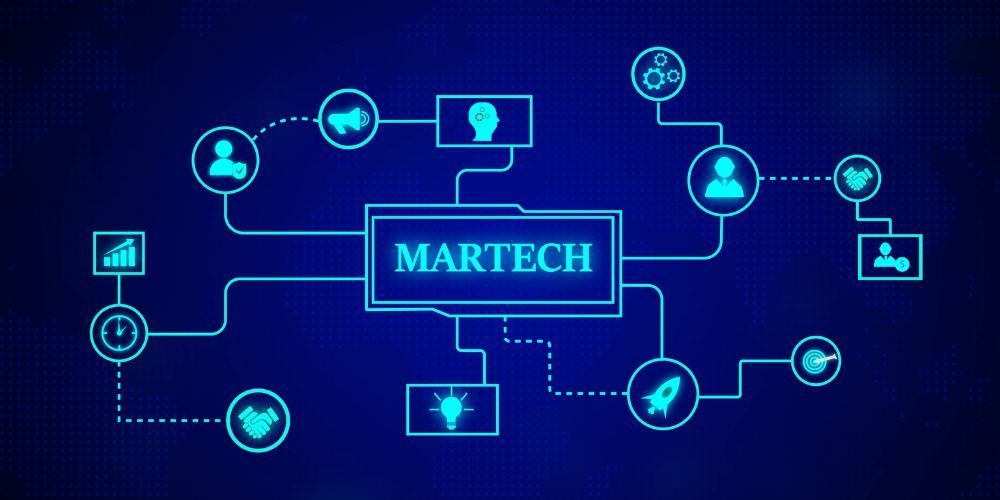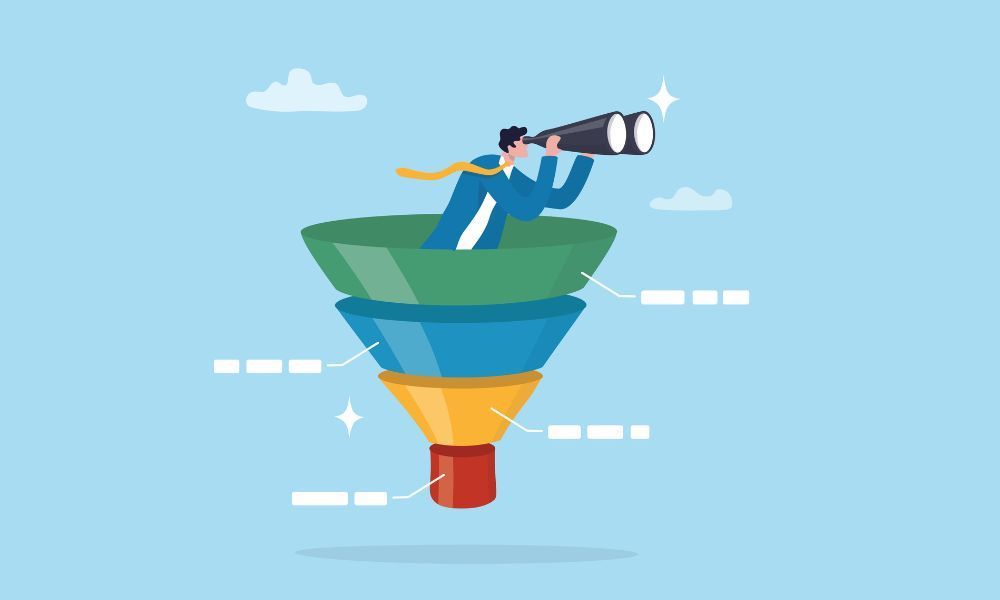The Death of the Traditional CRM: What Comes Next?
Last month, during a strategy session with a fintech client, I was asked a question that stopped me in my tracks: "Why is our million-dollar CRM any better than an Excel sheet with AI applied to it?" What began as a provocative thought experiment quickly turned serious when I shared a case study of a B2B software company that had replaced their enterprise CRM with Google Sheets and an AI layer—and saw both adoption and outcomes improve dramatically.
Throughout my 20+ years in digital transformation, I've witnessed countless technology shifts, but few have been as potentially disruptive as what we're seeing in the customer data space today. Having led CRM implementations that generated millions in revenue at Formative and guided Novartis through consolidating hundreds of digital touchpoints, I've developed a front-row perspective on this evolution.
The hard truth: As AI reshapes the MarTech landscape, it's exposing what many of us have quietly known for years—traditional CRM implementations are often expensive data graveyards filled with incomplete, inconsistent, and non-standardized information. Companies investing heavily in applying AI to these systems are discovering their CRM data simply isn't up to the task.
So, is CRM dead? Is the future of CRM actually a future without CRM as we know it? Let's examine where we are, where we're headed, and what forward-thinking businesses should do about it.

The Current State of CRM: Promise vs. Reality
Customer Relationship Management systems emerged with a compelling promise: a 360-degree view of the customer that would enable personalized experiences, streamlined sales processes, and data-driven marketing decisions. The reality, however, has been quite different for many organizations.
The Gap Between Vision and Implementation
Most businesses use their CRM systems as glorified contact databases. Sales teams reluctantly update records (often incompletely), marketing teams struggle to extract meaningful insights, and the dream of a unified customer view remains elusive. The problem isn't necessarily with the CRM platforms themselves but with how companies implement and maintain them.
During my time at Formative, I helped enterprises implement CRM solutions that delivered 3.5X ROI within the first year. The difference between success and failure wasn't the technology—it was the organizational commitment to data quality and process integration.
The Data Quality Crisis
The current AI revolution is revealing just how problematic CRM data quality really is. Common issues include:
- Incomplete records: Essential fields left empty or filled with placeholder text
- Inconsistent formatting: The same information entered in different ways across records
- Outdated information: Customer data that hasn't been refreshed in years
- Siloed systems: Customer data fragmented across multiple platforms
- Poor standardization: Lack of uniform data entry protocols
When companies try to apply sophisticated AI tools to this data, they encounter the classic "garbage in, garbage out" problem. The algorithms can only work with what they're given, and what they're given is often inadequate.
The Rise of Alternatives: CDPs, AI Platforms, and Simplified Solutions
As frustrations with traditional CRMs mount, alternatives are gaining traction in the marketplace. In my recent consulting work, I've seen companies increasingly experimenting with these alternatives—often in parallel with their existing CRM investments.
Customer Data Platforms (CDPs)
CDPs emerged to address the fragmentation of customer data across multiple systems. Unlike CRMs, which are primarily designed as operational tools for sales and service teams, CDPs focus on creating unified customer profiles by ingesting data from multiple sources.
When I helped Nielsen implement their marketing automation strategy, we discovered their CRM data alone was insufficient for effective personalization. By implementing a CDP approach, we were able to unify first-party data with behavioral signals, drastically improving campaign performance.
Key advantages of CDPs include:
- Native identity resolution capabilities that connect anonymous and known user behavior
- Purpose-built for marketing activation across channels
- Designed to handle unstructured data like social media interactions and support conversations
- Built for real-time data processing and decisioning
- Sophisticated consent and preference management capabilities (crucial in our privacy-focused era)
While CDPs don't replace all CRM functionality, they're increasingly becoming the system of record for customer profiles and the engine behind personalized marketing experiences. Vendors like Segment, Tealium, and ActionIQ are redefining how companies think about customer data management.
AI-Driven Marketing Platforms
A new generation of marketing platforms is incorporating AI capabilities from the ground up. Rather than bolting AI onto existing systems (as many legacy CRM vendors are attempting), these platforms use machine learning as their core architecture.
I recently advised a D2C e-commerce client who switched from a traditional CRM to an AI-native platform. The results were striking: a 37% increase in customer retention and a 40% reduction in time spent on customer data management.
These next-generation platforms can:
- Autonomously clean and standardize incoming data without extensive rule creation
- Generate predictive insights without extensive manual analysis or data science expertise
- Create dynamic segments based on behavioral patterns and propensity modeling
- Recommend next-best actions for customer engagement across touchpoints
- Surface relationship insights that would remain hidden in traditional systems
- Self-optimize campaigns based on real-time performance data
Platforms like Blueshift, Bloomreach, and MoEngage exemplify this approach, often including lightweight CRM functionality but focusing primarily on actionable intelligence rather than comprehensive data storage.
Vertical-Specific Solutions
Another interesting trend is the rise of industry-specific alternatives to horizontal CRMs. These specialized platforms understand the unique customer journeys and data requirements of particular industries:
- Healthcare: Platforms like Welkin Health and Healthie that manage patient relationships with compliance built-in
- Real Estate: Solutions like Follow Up Boss that focus on the specific nurturing patterns of property transactions
- Education: Systems like Slate that manage the complex multi-stage admissions and alumni relationships
These vertical solutions often achieve higher adoption rates because they align perfectly with existing workflows rather than forcing standardized processes.
The Google Sheet + AI Approach
Perhaps the most radical trend is the emergence of ultra-simplified approaches. One of my enterprise clients was spending $2.3M annually on their CRM, yet their sales team was bypassing it entirely, maintaining shadow spreadsheets for actual deal management.
This isn't uncommon. In another compelling case study, a mid-sized B2B company replaced their enterprise CRM with a combination of Google Sheets and AI tools, integrating with tools like Claude.ai for analysis and recommendations. Their reasoning was straightforward:
- Their sales team was only using about 10% of the CRM's features, creating unnecessary complexity
- Data entry was simpler and more consistent in a familiar spreadsheet format
- Modern AI tools could analyze the structured data more effectively without additional integration work
- The cost savings were substantial—nearly $850K annually including licenses and administration
The results? Sales rep adoption went from 63% to 94%, data completeness improved by 27%, and their sales forecasting accuracy increased dramatically.
Composable CRM Architecture
For enterprises with complex needs, another emerging approach is the "composable CRM"—replacing monolithic systems with best-of-breed components connected through robust APIs. This approach allows organizations to:
- Select the ideal solution for each specific function (sales automation, support, marketing)
- Adapt quickly as needs change by replacing individual components
- Create custom experiences for different teams while maintaining data consistency
- Avoid vendor lock-in that has plagued traditional CRM implementations
While this approach requires stronger technical governance, it provides the flexibility many businesses have found lacking in traditional CRMs.
The common thread across all these alternatives? They prioritize user experience and actionable insights over comprehensive data collection for its own sake—a fundamental shift from traditional CRM philosophy.

The Future of Customer Relationship Management
Despite these challenges, CRM as a discipline isn't disappearing—it's evolving. The future likely involves a hybridization of approaches, with AI serving as both the revealer of CRM weaknesses and potentially its savior.
AI as Both Problem and Solution
AI applications are exposing data quality issues in CRMs, but they're also offering solutions. This paradox is playing out in fascinating ways across the industry.
During a recent project with a financial services client, we discovered their CRM data was too compromised for an effective AI implementation. Rather than abandoning the project, we deployed an AI data quality layer that:
- Identified duplicate records with 97% accuracy using fuzzy matching algorithms
- Detected and highlighted anomalous data patterns indicating poor input practices
- Predicted which fields were most likely to contain errors based on historical patterns
- Recommended data governance improvements specific to their industry and workflow
Within three months, the system had automatically corrected over 40,000 records and flagged another 30,000 for human review, transforming a liability into an asset.
Beyond basic data cleansing, cutting-edge AI applications for CRM include:
Intelligent Data Enrichment
Companies like Clearbit and ZoomInfo have long offered data enrichment, but newer AI-powered solutions like Clay.com and Bardeen take this further. They don't just append company data—they analyze communication patterns, social signals, and news mentions to create dynamic customer profiles that update automatically based on changing market conditions.
Conversation Intelligence
Platforms like Gong and Chorus analyze sales conversations for insights, but next-generation tools are taking this further by integrating directly with CRMs to:
- Automatically create contact records for new meeting participants
- Tag opportunities with competitive mentions and objections in real-time
- Generate personalized follow-up content based on conversation analysis
- Predict deal outcomes based on conversation quality and engagement patterns
Autonomous Relationship Management
Perhaps most fascinating are tools like Lavender, Warmly, and Retain that can autonomously nurture relationships by:
- Drafting personalized follow-up emails based on relationship history
- Suggesting optimal timing for outreach based on previous engagement
- Identifying relationships at risk of decay before humans notice the pattern
- Recommending specific talking points based on recent company news or changes
Customer Journey Orchestration
AI is enabling systems to move beyond basic marketing automation to true journey orchestration, with platforms like Klayvio and Braze using AI to:
- Predict the next best action across channels and touchpoints
- Identify the optimal channel mix for each individual customer
- Automatically adjust messaging cadence based on engagement signals
- Create dynamic segments that evolve based on behavioral patterns
The CRM systems that survive will be those that embrace these capabilities and solve the fundamental data quality problems that have plagued the industry. Legacy vendors like Salesforce (with Einstein), Microsoft (with Dynamics 365 Copilot), and HubSpot (with their AI tools) are investing heavily to avoid disruption, but the question remains whether they can overcome the architectural limitations of platforms designed in a pre-AI era.
The Emergence of Hybrid Approaches
Rather than a wholesale replacement of CRMs, we're likely to see hybrid approaches emerge:
- Core CRM + Best-of-breed extensions: Using specialized tools for specific functions rather than all-in-one platforms
- Lightweight CRM + AI intelligence layer: Simplifying the core CRM and adding sophisticated analytics on top
- CDP-centered architecture: Making the customer data platform the central hub with CRM as one of many connected systems
What Really Matters: Relationships, Not Systems
Throughout these changes, businesses need to remember that the goal isn't having the perfect system—it's understanding and serving customers better. The technology should facilitate relationships, not become an end in itself.
Practical Recommendations: Navigating the Changing Landscape
If you're reassessing your CRM strategy in light of these changes, here are some practical steps to consider:
Audit Your Current CRM Implementation
Before making any decisions, conduct an honest assessment of your current situation:
- What percentage of your CRM's features do you actually use?
- How complete and accurate is your customer data?
- Are your teams consistently updating records?
- What business questions can (and can't) your CRM answer?
This assessment will reveal whether you have a technology problem or a process/people problem.
Questions to Ask Before Further CRM Investment
If you're considering upgrades or new implementations, ask:
- Could a simpler solution meet our core needs?
- What specific business outcomes are we trying to achieve?
- Do we have the organizational discipline to maintain data quality?
- How will AI capabilities factor into our future strategy?
Preparing for an AI-Enhanced Customer Data Strategy
Regardless of which direction you take, preparing for an AI-enabled future requires:
- Data cleaning and standardization: Implementing consistent data protocols
- Integration planning: Ensuring systems can share information effectively
- Skills development: Training teams to work with AI-enhanced tools
- Process redesign: Adapting workflows to leverage new capabilities
Right-Sizing Your Approach
The appropriate solution varies based on your business:
- Enterprise organizations might need a full CDP + CRM architecture with sophisticated governance
- Mid-market companies could benefit from lightweight CRMs with AI enhancement
- Small businesses might find that simple tools with focused AI capabilities are sufficient
Is CRM Dead? Evolution, Not Extinction
So is the traditional CRM dead? Based on my 20+ years in digital transformation and current consulting work, I'd argue we're witnessing not a death but a necessary reinvention.
The future of CRM isn't monolithic systems trying to be everything to everyone. It's intelligent, focused solutions that understand specific business contexts and automatically deliver insights without requiring perfect data hygiene. It's MarTech without the traditional CRM constraints but with all the relationship benefits.
What's truly dying is the empty promise of the all-in-one CRM as the single source of truth—a promise that was rarely fulfilled despite massive investments. What's emerging instead is a more pragmatic, flexible approach centered on outcomes rather than the system itself.
For executives asking "is CRM dead?" for their organization, consider this framework:
- If your CRM is primarily a data repository with poor adoption, it's likely already "dead" in terms of delivering value
- If you're spending more maintaining your CRM than extracting actionable insights from it, it's time to reconsider your approach
- If your teams are creating workarounds to avoid using the CRM, you're paying for shelf-ware
The companies thriving in this new landscape understand that customer relationship management is a vital business function, but traditional CRM software is just one possible tool—and increasingly not the best one for many use cases.
As you navigate this shifting terrain, remember that the goal has never changed: understanding customers deeply, serving them effectively, and building lasting relationships. The systems enabling those goals, however, are transforming radically—and organizations that cling to outdated approaches risk finding themselves with expensive dinosaurs while their competitors embrace the mammals of the new MarTech era.
In my next post, I'll explore specific steps for auditing your current CRM implementation and evaluating whether alternatives might better serve your business goals. Until then, I'd welcome hearing your experiences—are you seeing the "death of CRM" in your organization, or finding ways to breathe new life into these investments?
Should my company abandon our traditional CRM investment?
Not necessarily. The decision depends on your specific business needs and how well your current CRM is serving them. First, evaluate your CRM's actual utilization rate, data quality, and ROI. If your teams have high adoption rates, your data is relatively clean, and you're extracting actionable insights, your CRM may still be valuable. However, if you're experiencing low adoption, poor data quality, and minimal actionable insights, it may be time to explore alternatives.
Consider a hybrid approach before complete abandonment—supplement your existing CRM with AI tools for data cleansing and insights, or gradually transition specific functions to more specialized platforms. Many organizations are finding success with a phased transformation rather than a complete replacement.
How can we prepare our customer data for AI implementation regardless of which platform we use?
Data preparation is crucial for AI success regardless of your platform choice. Start with these foundational steps:
- Conduct a data audit: Assess completeness, accuracy, consistency, and relevance of your current customer data.
- Establish data governance: Create clear standards for data entry, maintenance, and quality control with assigned responsibilities.
- Implement systematic cleansing: Remove duplicates, standardize formats, and correct obvious errors.
- Enrich strategically: Identify the most valuable missing attributes and use reliable third-party sources to fill gaps.
- Create unified customer IDs: Develop a system to connect customer data across touchpoints and platforms.
- Document data lineage: Track where data originates and how it transforms throughout your ecosystem.
- Start small: Begin AI implementation with your cleanest, highest-quality data subset before expanding.
Remember that data preparation is not a one-time project but an ongoing discipline. Organizations that excel with AI treat data quality as a continuous process rather than a finite initiative.
What skills should we be developing in our marketing and sales teams for this new CRM landscape?
As the CRM landscape evolves, your teams need to develop a blend of technical, analytical, and strategic capabilities:
Technical Skills:
- Basic data literacy and understanding of data structures
- Familiarity with API concepts and how systems connect
- Ability to interpret AI-generated insights and recommendations
- Comfort with visualization tools to communicate findings
Analytical Skills:
- Critical thinking to question and validate automated recommendations
- Pattern recognition to identify trends in customer behavior
- Hypothesis development and testing mindset
- Ability to translate data insights into actionable strategies
Strategic Skills:
- Customer journey mapping across multiple touchpoints
- Cross-channel orchestration thinking
- Outcome-focused measurement beyond traditional metrics
- Ethical data usage and privacy-forward thinking
Most importantly, cultivate adaptability. The tools will continue to change rapidly, but the fundamental goal—understanding customers and building meaningful relationships—remains constant. Teams that can balance human insight with technological capability will thrive in this new landscape.
Consider creating internal training programs or leveraging external resources to develop these skills. Many organizations are finding success with cross-functional "pods" that combine technical and business expertise to maximize the value of their customer data investments.
Author: William Flaiz










